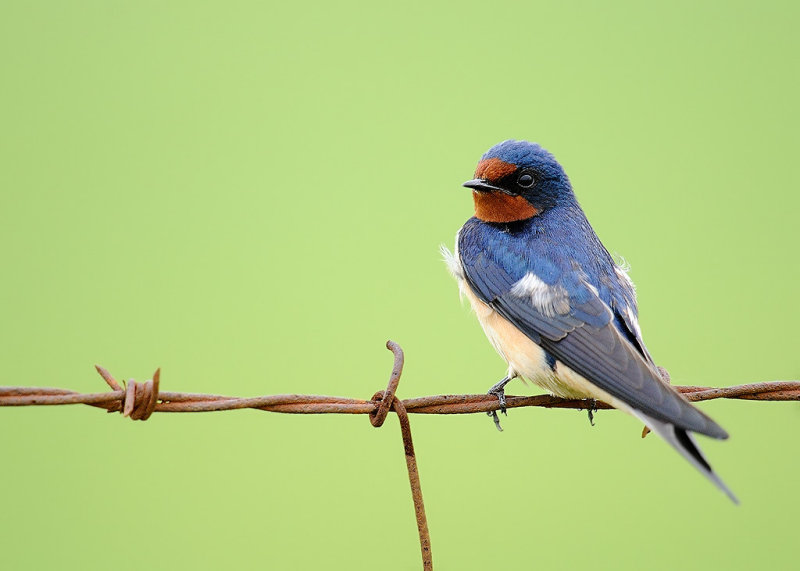![barn_swallow [ID=10376125]](http://moc-assets-prod.gannett-cdn.com/-mm-/4e2389e07916482fe12919f7086022491e9eb211/r=500x356/local/-/media/KTHV/KTHV/2014/06/12/1402595146000-barn-swallow.jpg)
LITTLE ROCK, Ark. (KTHV) -- The bird of the week for June 12 is the barn swallow.
Glistening cobalt blue above and tawny below, Barn Swallows dart gracefully over fields, barnyards, and open water in search of flying insect prey. Look for the long, deeply forked tail that streams out behind this agile flyer and sets it apart from all other North American swallows. Barn Swallows often cruise low, flying just a few inches above the ground or water. True to their name, they build their cup-shaped mud nests almost exclusively on human-made structures. You can find the adaptable Barn Swallow feeding in open habitats from fields, parks, and roadway edges to marshes, meadows, ponds, and coastal waters. Their nests are often easy to spot under the eaves or inside of sheds, barns, bridges and other structures.
Migration
Long-distance migrant. Barn Swallows fly from North American breeding grounds to wintering areas in Central and South America. Southbound fall migration may begin by late June in Florida or early July in Massachusetts. They return as early as late January in southern California to mid-May at Alaskan breeding sites.
Backyard Tips
Barn Swallows don't come to seed or suet feeders, but they may take ground-up eggshells or oyster shells placed on an open platform feeder. If you have a suitable outbuilding, leaving a door or window open can encourage Barn Swallows to build a nest inside. Providing a source of mud will also help with nest building. Barn Swallows may use artificial nest cups attached to an appropriate surface.
Find This Bird
Look for Barn Swallows feeding above meadows, fields, and farmyards and over water, or perched on wires near feeding areas and nesting sites. During the breeding season keep an eye on mud puddles, as Barn Swallows come to the ground to pick up mud and grass for nesting materials. Their mud nests are often tucked under the eaves of barns and stables, on structures near playing fields, or under bridges. You can find Barn Swallows across most of North America.
(Source: www.allaboutbirds.org)


